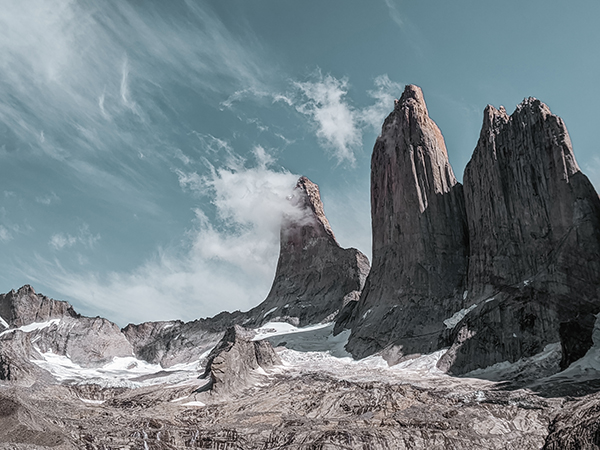Chile
Patagonia, Torres del Paine National Park and much more
Patagonia National Park (Chile)
Patagonia National Park (Spanish: Parque Patagonia) is a National Park in the Aysén Region of Chile, once a private nature reserve operated as a public-access park, it was donated to the government of Chile by Tompkins Conservation in 2018.
The heart of the park is the Chacabuco Valley, a biologically important east–west valley that forms a pass over the Andes Mountains and a transition zone between the Patagonian steppe grasslands of Argentinian Patagonia and the southern beech forests of Chilean Patagonia to the west. It is located between General Carrera Lake to the north and Cochrane Lake to the south and extends to the Argentinian border to the east. The park has an infrastructure of trails, campgrounds, and a visitor center.
Parque Patagonia was created by Conservacion Patagonica, a nonprofit incorporated in California and founded in 2000 by Kris Tompkins, to protect Patagonia's wildlands and ecosystems. Conservacion Patagonica has since merged into Tompkins Conservation.
On January 29, 2018, Chilean President Michelle Bachelet and Kris Tompkins, President of Tompkins Conservation, signed a decree creating 5 national parks, one of which is Patagonia National Park. Parque Patagonia was gifted to the Chilean state and then combined with Lago Jeinimeni National Reserve, Lago Cochrane National Reserve, and other additional lands to create Patagonia National Park, with a combined area of 260,000 hectares (640,000 acres).
From Wikipedia, the free encyclopedia
Torres del Paine National Park
Torres del Paine National Park (Spanish: Parque Nacional Torres del Paine) is a national park encompassing mountains, glaciers, lakes, and rivers in southern Chilean Patagonia. The Cordillera del Paine is the centerpiece of the park. It lies in a transition area between the Magellanic subpolar forests and the Patagonian Steppes. The park is located 112 km (70 mi) north of Puerto Natales and 312 km (194 mi) north of Punta Arenas. The park borders Bernardo O'Higgins National Park to the west and the Los Glaciares National Park to the north in Argentine territory. Paine means "blue" in the native Tehuelche (Aonikenk) language and is pronounced PIE-neh, while Torres means "towers". It was established as a National Park in 1959.
Torres del Paine National Park is part of the Sistema Nacional de Áreas Silvestres Protegidas del Estado de Chile (National System of Protected Forested Areas of Chile). In 2013, it measured approximately 181,414 hectares (700 sq mi). It is one of the largest and most visited parks in Chile. The park averages around 252,000 visitors a year, of which 54% are foreign tourists, who come from many countries all over the world. It is also part of the End of the World Route, a tourist scenic route.
The park is one of the 11 protected areas of the Magallanes Region and Chilean Antarctica (together with four national parks, three national reserves, and three national monuments). Together, the protected forested areas comprise about 51% of the land of the region (6,728,744 hectares (25,980 sq mi)).
The Torres del Paine are the distinctive three granite peaks of the Paine mountain range or Paine Massif. From left to right they are known as Torres d'Agostini, Torres Central and Torres Monzino. They extend up to 2,500 metres (8,200 ft) above sea level and are joined by the Cuernos del Paine. The area also boasts valleys, rivers such as the Paine, lakes, and glaciers. The well-known lakes include Grey, Pehoé, Nordenskiöld, and Sarmiento. The glaciers, including Grey, Pingo, and Tyndall, belong to the Southern Patagonia Ice Field.
From Wikipedia, the free encyclopedia








